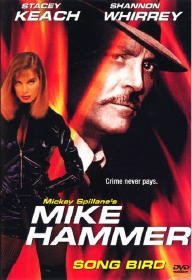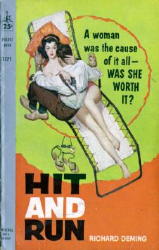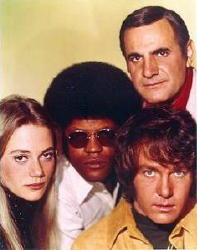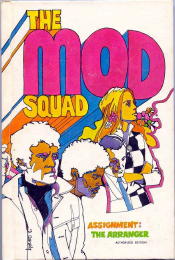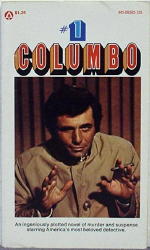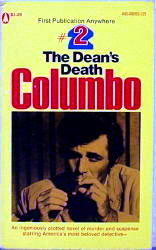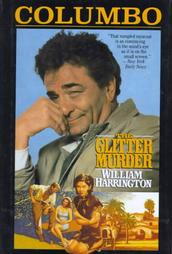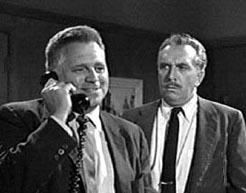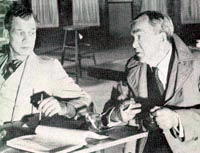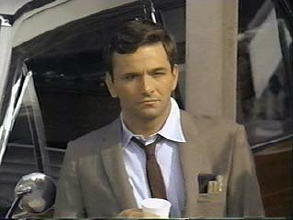Fri 7 Sep 2007
Tise Vahimagi: The TV credits of DAVID GOODIS and W. R. BURNETT
Posted by Steve under Authors , Mystery movies , TV mysteries[9] Comments
I am always fascinated by the credited (as well as the uncredited) work of interesting genre authors for television: not, generally, that it really signifies anything very much, but there is considerable satisfaction to be drawn from recognising, or kidding oneself that one recognises, the hand of a favourite author in some otherwise unremarkable small screen work.
Rather sadly, not too many such opportunities present themselves these days.
David Goodis is an interesting case in point: while his novels and his source-as-screenplays are duly honoured in their respective quarters (read, viewed, reviewed), his admittedly slim trail of TV credits have been all but forgotten.
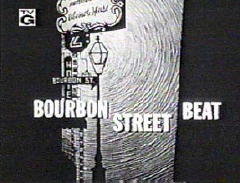
Thank you, Mr. Nevins, for your astute observations once again (the Bourbon Street Beat segment). (I am still indebted to you for your enlightening article ‘Cornell Woolrich on the Small Screen’ in The Armchair Detective of Spring 1984.)
The earliest Goodis television credit that I’ve been able to unearth belongs to the live anthology series Sure As Fate (CBS, 1950-51), which staged ‘Nightfall’ in September 1950, adapted by Max Ehrlich and directed by Yul Brynner in his days as a studio director with CBS-TV. John McQuade featured as the young artist on the lam from both gangsters and police. A version of ‘Nightfall’ was also presented by (Westinghouse) Studio One in the following year (July 1951).
Edmond O’Brien and Maria Riva featured in ‘Ceylon Treasure’, adapted by Irwin Lewis from a Goodis story for Lux Video Theatre in January 1952. This was a Far East adventure yarn in which treasure hunter O’Brien tries to keep safe a fabulous sapphire against the larcenous efforts of Riva and her cohorts. Adapted from the 1953 short story “The Blue Sweetheart”, I believe.
In January 1956, Lux presented their version of Warner’s 1947 The Unfaithful, featuring Jan Sterling and Hugh Beaumont in a noirish tale of murder and infidelity. Benjamin Simcoe adapted the Goodis-James Gunn story and screenplay for the hour-long play.
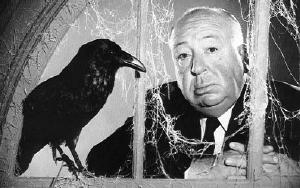
The Alfred Hitchcock Hour (CBS/NBC, 1962-65) was one of the most effective chiller-suspense anthologies of its period, and it seems fitting that Goodis developed for the series the teleplay ‘An Out for Oscar’ from Henry Kane’s story My Darlin’ Evangeline (Dell, 1961). Telecast in April 1963, the multi-twist story has Larry Storch’s bank clerk being set up as the fall guy by his unfaithful wife (Linda Christian) and her killer boyfriend (Henry Silva) in a turnaround heist thriller.
An anthology package of more recent years, the superbly dark and diverting Fallen Angels (Showtime, 1993; 1995), presented the 1953 Goodis short story ‘The Professional Man’ (1995), with Brendan Fraser as a hit man with a conscience. Teleplay veteran Howard Rodman (Naked City, Harry-O) adapted the half-hour episode for director Steven Soderbergh.
By happy coincidence, another favourite from the past, W.R. Burnett, whose novel Dr. Socrates has recently been revived by O’Bryan House. It may therefore be of interest to overview the TV work of Burnett, another original whose credits cropped up on the small screen, albeit intermittently, between 1950 and 1967, but whose name as screen value seems now to have faded from view.
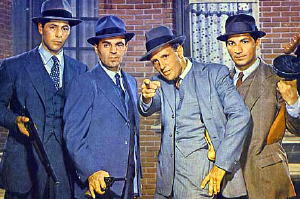
Following adaptations of his works, by others, for the anthology series Danger (with ‘Dressing Up’ in October 1950) and Studio One (‘Little Man, Big World’ in October 1952, from teleplay by Reginald Rose), Burnett supplied two notable teleplays for episodic series in 1960. The first was ‘The Big Squeeze’ (February 1960; co-scripted with Robert C. Dennis from Dennis’s story) for The Untouchables, an exciting hour with Dan O’Herlihy as a bank robbery mastermind (of almost Dillinger dimensions) capable of outwitting Robert Stack’s Eliot Ness at almost every turn.
The second teleplay, ‘Debt of Honor’ (November 1960) for the excellent Naked City series, was a moody, sensitive piece about gambler Steve Cochran repaying an old debt to a man in Italy by marrying the man’s daughter so that she can enter the U.S.
The following work was skipped from the above chronology because, while sharing Mr. Nevins’s dread of the Warner Brothers TV ‘sausage factory’ of the day, one still wonders what was made of the race-track thriller ‘Thanks for Tomorrow’ (October 1959) for 77 Sunset Strip. With a teleplay adapted by William L. Stuart — whose own 1948 Night Cry was turned into the memorable Where the Sidewalk Ends in 1950 by Preminger — from (and I’m not certain here) Burnett’s Tomorrow’s Another Day (1946), there just may be a little of something left to savor.
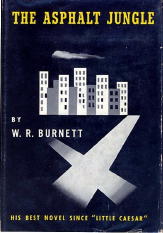
In 1961, MGM used the title of their 1950 Burnett/John Huston movie, The Asphalt Jungle, for a short-lived police detective series which, while fairly interesting in itself, bore absolutely no relation to the taut caper feature. Burnett was credited (with Paul Monash) for the screenplay of the European-released ‘feature’, The Lawbreakers (1961), an extended version of the series’ second episode (‘The Lady and the Lawyer’).
His non-crime genre work for television included John Ford’s 1955 baseball drama ‘Rookie of the Year’ (story only) for Screen Directors Playhouse, ‘Manhunt’ (1965) for The Legend of Jesse James, ‘The Hellcats’ (1967), a pilot episode co-scripted with Tony Barrett about barnstorming flyers in the 1920s, and ‘The Fortress’ (1967) episode of The Virginian series (co-story with Sy Salkowitz), focusing on a Canadian border manhunt.
Earlier talents and their moments of television (and cinema) remain, unfortunately, much in need of discovery.
